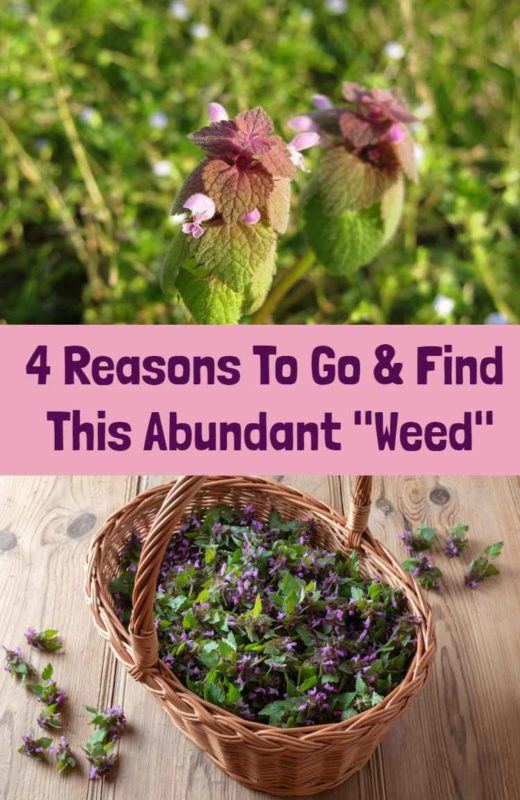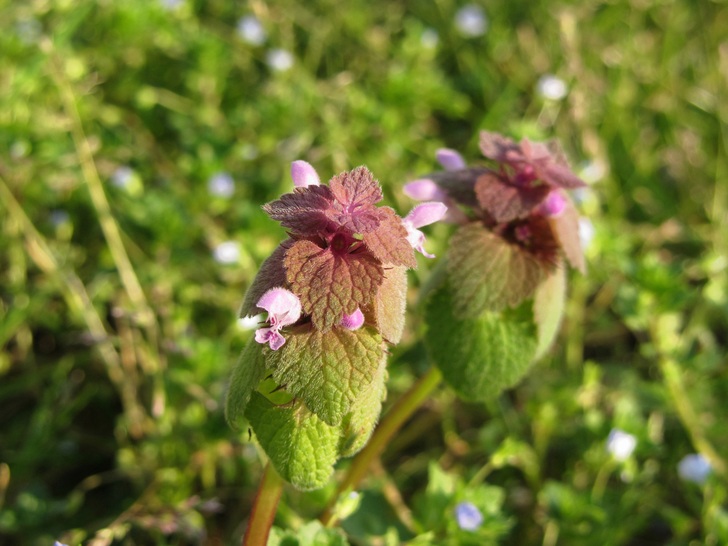
You’ve probably seen purple dead-nettle growing at one time or another, even if you didn’t realize it.
This common plant that’s native to Europe and Asia, can now be found throughout North America too, and it’s very widespread.
If you start paying more attention to the plants around you the next time you go for a walk, odds are, you’ll see it growing.
It’s one of those plants that when you see its image, you immediately recognize it, you just didn’t know what it was called.
Purple dead nettle is one of the safer plants to forage. It has no dangerous lookalikes, but it is still advisable to have on hand a foraging field guide to help you identify.
Below is our recommended resource to take with you:

Edible Wild Plants: A North American Field Guide to Over 200 Natural Foods
It contains beautiful color photographs of each plant, as well as a season by season guide to identifying, harvesting and preparing more than 200 edible plants.
Purple dead-nettle is in the mint family. It forms early groundcover mats, with fuzzy, spade-shaped leaves and delicate purple-pink flowers, a lovely addition to a spring weed bouquet.
It was named “dead-nettle,” due to its resemblance to stinging nettle, but it has no relation and comes without that awful sting.
So why should you go out and find it? There are many reasons, including these.
1. Purple dead-nettle is a wild, edible green
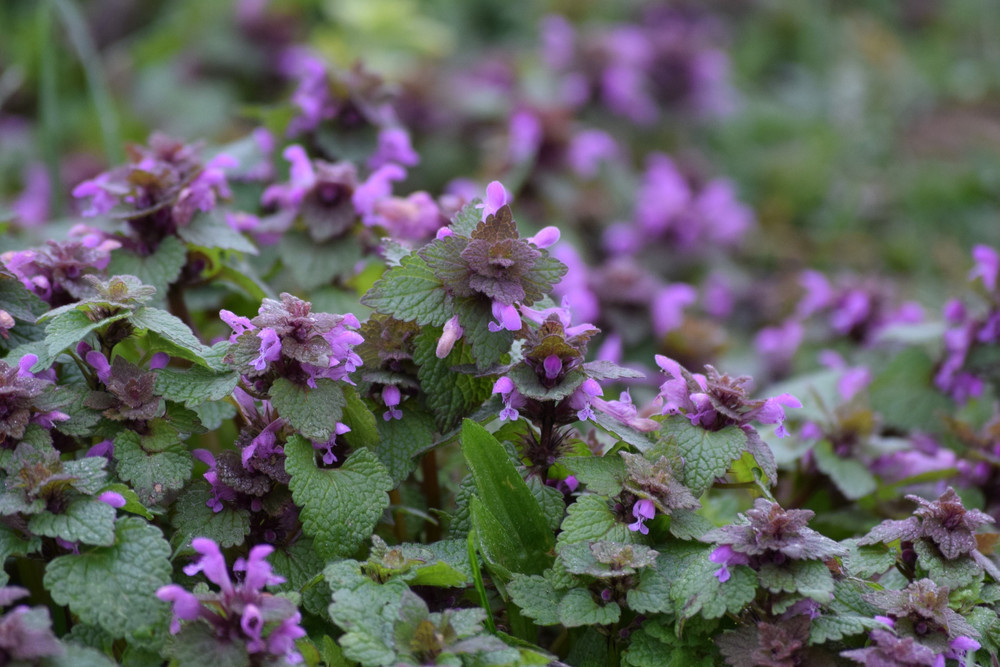
Purple dead-nettle is edible, in fact, you can eat the entire plant. It has a mild, slightly grassy, somewhat floral flavor, and the purple tops are even a little sweet.
Although it is in the mint family, it doesn’t have a minty taste. It can be used in salads, soups, blended into smoothies or made into a tea.
Generally, you can use it just like you would any other green. The plant can also be finely minced and used as a garnish like you would an herb.
The easiest way to get the maximum out of its nutrition benefits, as discussed below, is to toss a bunch into a smoothie – banana and mango are especially good complements.
Making it into a tea is also a good way to take advantage of those benefits, just keep in mind that it may have a laxative effect if you drink a large amount.
2. Purple dead-nettle is highly nutritious
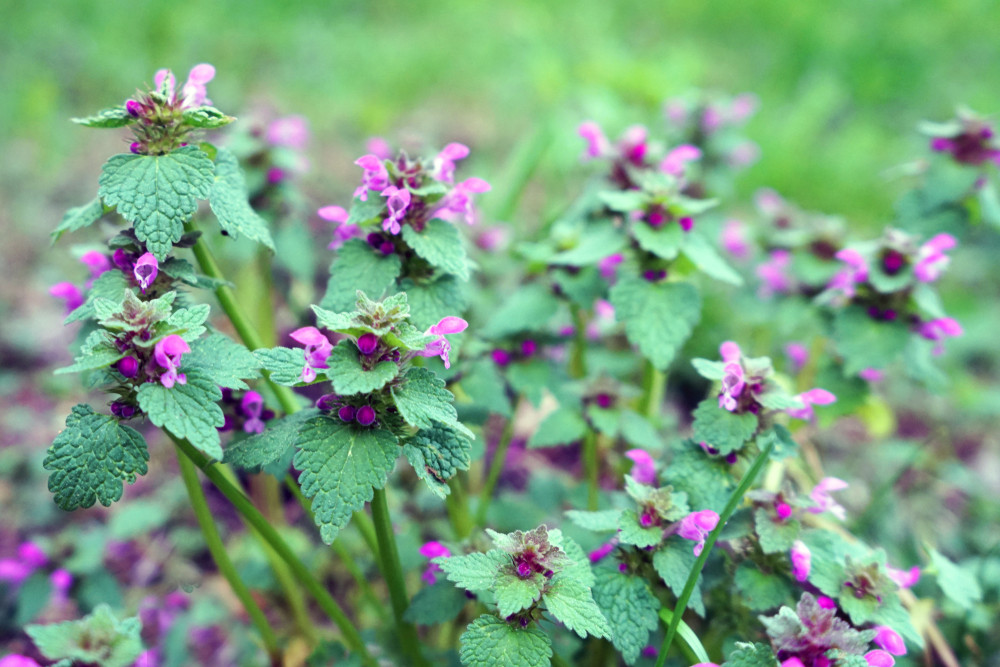
The plant is highly nutritious. It’s abundant in vitamins, particularly vitamin C, along with iron and fiber, while the oil in its seeds is packed with powerful antioxidants.
3. Purple dead-nettle offers a host of medicinal benefits
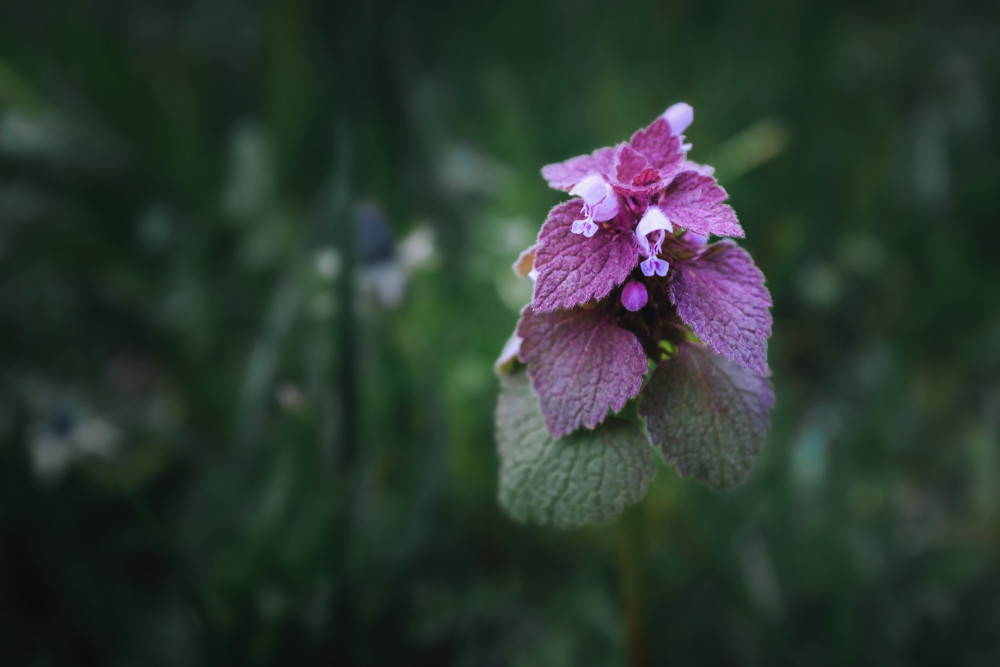
This plant is renowned for its medicinal benefits, as it’s considered to be anti-inflammatory, antibacterial and antifungal. It’s also a diuretic, an astringent and diaphoretic.
Purple dead-nettle is known for reducing allergy symptoms, in fact, its antifungal and antibacterial compounds are currently being studied in an attempt to explain the reason behind its medicinal abilities linked to allergies.
It can also protect allergy sufferers from secondary infections of the throat and bronchi.
The leaves of the purple dead-nettle plant can be placed on wounds or cuts to stop bleeding, and its vitamin C and flavonoids work together to help boost the immune system and fight infection.
Research published in 2007 in the Hacepttepe University Journal of the Faculty of Pharmacy in Turkey, found it to be effective against the E. coli bacteria and others too. Its anti-inflammatory properties were documented in 2008 research in the Journal of Ethnopharmacology.
Although science is only just now catching up, it seems we’ve known about purple dead nettles benefits for centuries. In fact, in the 17th century, Nicholas Culpepper had a number of interesting things to say about it in his book entitled Culpeper’s Complete Herbal: A Book of Natural Remedies for Ancient Ills
“It makes the head merry, drives away melancholy, quickens the spirits, is good against quartan agues, stancheth bleeding at mouth and nose, if it be stamped and applied to the nape of the neck; the herb also bruised, and with some salt and vinegar, and hog-grease, laid upon a hard tumour or swelling, or that vulgarly called the king’s evil, do help to dissolve or discuss them; and being in like manner applied, doth much allay the pains, and give ease to the gout, sciatica, and other pains of the joints and sinews. It is also very effectual to heal green wounds, and old ulcers; also to stay their fretting, gnawing and spreading. It draweth forth splinters, and such like things gotten into the flesh, and is very good against bruises and burnings. But the yellow archangel is most commended for old, filthy, corrupt sores and ulcers, yea, although they grow to be hollow, and to dissolve tumors.”
4. Purple dead nettle benefits the bees
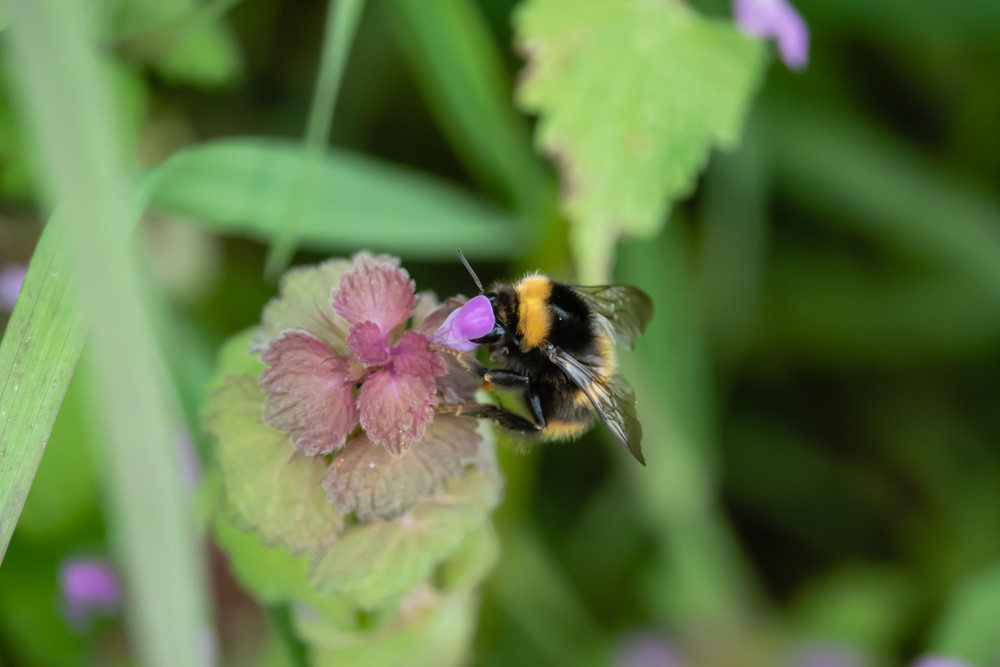
Bees love purple dead nettle. The plant is an important species for these endangered creatures, and not only do they seem to prefer it over other plants, but it’s one of the first to flower in the spring, which is why you may want to forage it now and use the seeds to plant it in your garden.
If you live in a mild climate, it may even flower through the winter to provide vital bee forage.
Growing your own purple dead-nettle:
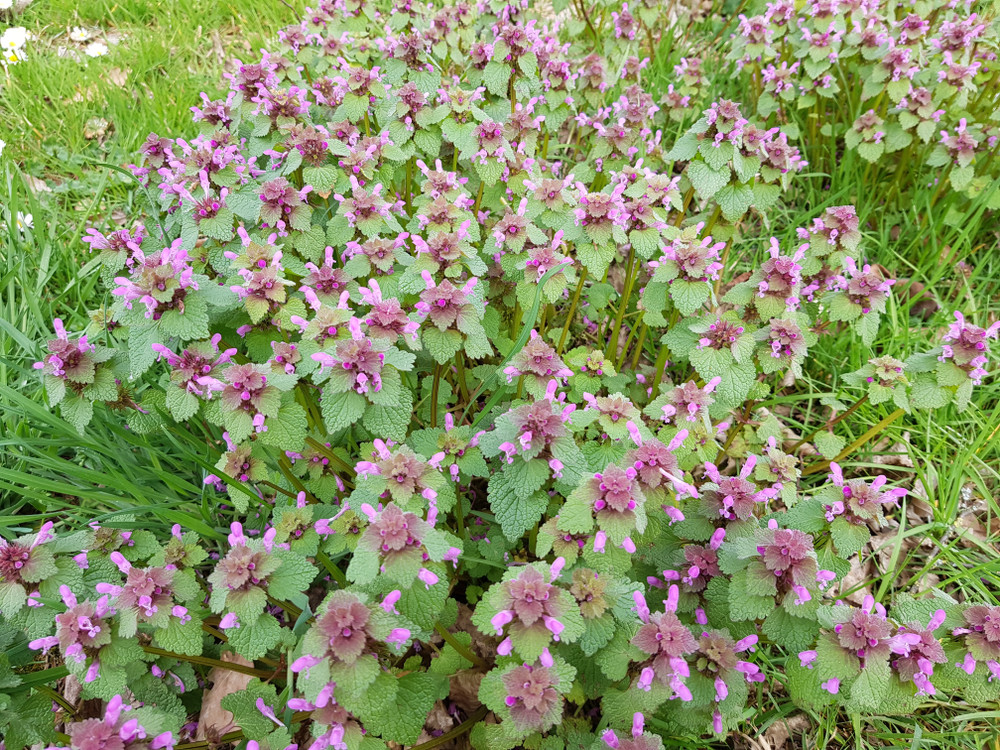
Planting purple dead nettle will allow you to enjoy your very own supply and help save the bees. You’ll have easy access to its fabulous benefits right outside your door.
To grow purple dead-nettle, you can start them by seed found on wild plants, spreading them in the fall on the ground.
Tamp and then cover them with mulch. They can also be planted in the spring after there is no chance of frost.
If you can’t find them growing in the wild, there are a number of speciality seed houses that carry them, and they are also available on Amazon from Palm Beach Medicinal Herbs here.
Purple dead-nettle is very easy to grow, they thrive in full sun, partial shade and even full shade provided it isn’t too dark.
If you do grow them in full sun and live in a warmer climate, just be aware that the heat will cause them to die back, but they’ll return in the fall or the following spring. They’ll do very well with moist, nutrient-rich soil, especially if its nitrogen-rich.
They prefer neutral to slightly alkaline soils, which makes it a good groundcover for those who live in areas where there is lots of limestone rock in and around the soil.
Harvesting is easy too, just pick the upper leaves and stems in the spring and summer.
Keep in mind that as the season moves forward, the stems tend to get tougher, but the leaves are still good through at least mid-summer.
Purple Dead Nettle Recipes
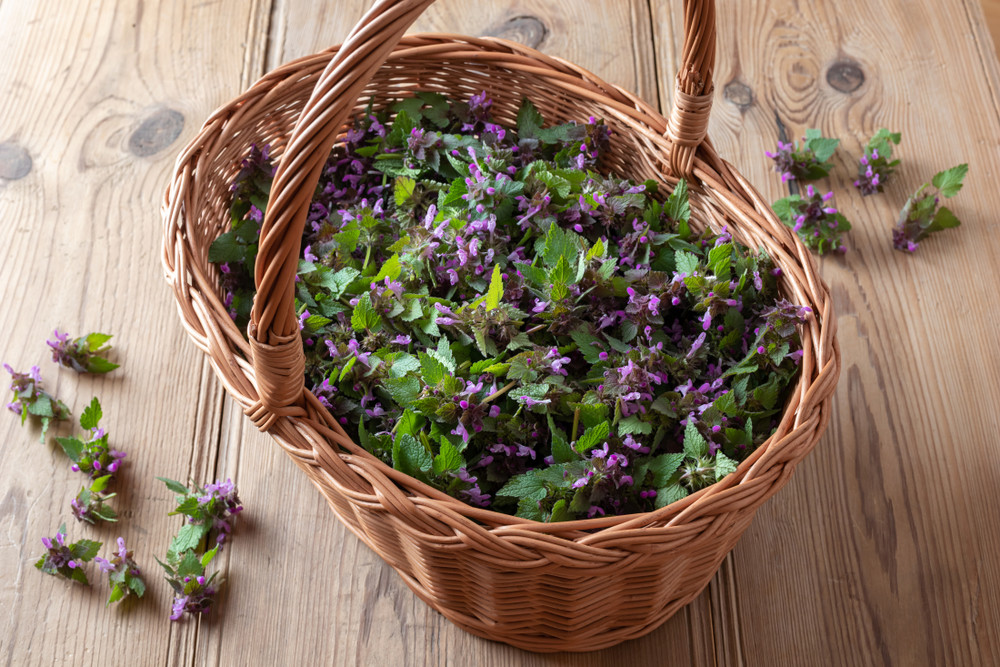
Purple Dead Nettle Tea (& 4 Other Easy Foraging Recipes) @ RuralSprout.com
Herbal Dead Nettle Salve – 3 Ways @ TheNerdyFarmWife.com
Purple Dead Nettle Soup @ Southern Forager
Wild Weeds Pesto with Dead Nettle @ NittyGrittyLife.com
Purple Dead Nettle Dye For Wool @ TimberCreekFarmer.com
Pin This To Save For Later
